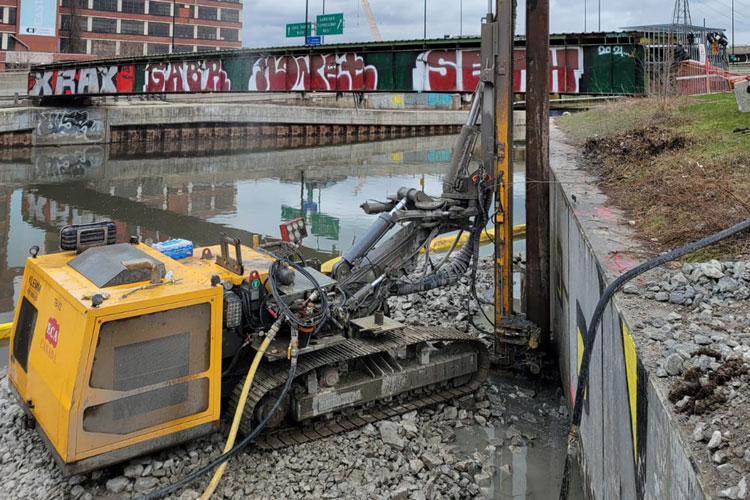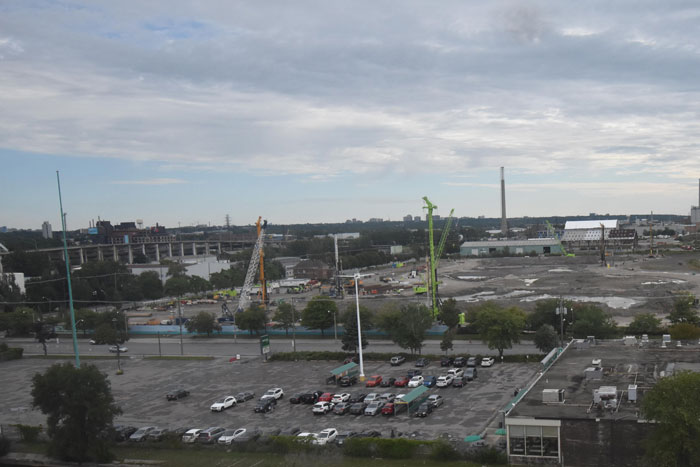Port Lands Flood Protection
Client
Waterfront Toronto
Duration
April 2019 to December 2020
Delivery Model
Design-Build
contract value
$125 M
Project Overview
The Don Mouth Naturalization and Portland Flood Protection (PLFP) project is a precedent-setting undertaking to revitalize the mouth of the Don River in Toronto. It transforms the existing mouth of the Don River, into a healthier, more naturalized river outlet, while simultaneously providing critical flood protection to 240 hectares of Toronto’s eastern waterfront.
Key Tasks
GIP (formerly GFL Infrastructure) was subcontracted to supply and install two-thirds of this multi-purpose cut-off wall. Work commenced in early April 2019 on Phase 1 and Phase 2 was substantially completed by December 2020.
The Phase 1 portion of work consisted of installing nearly 1500 interlocking secant piles of either 1000mm or 1180mm diameters into the bedrock a minimum of 3m. The depth of each secant pile ranged from 20m to 45m. Phase 2 included interlocking 1000-1180mm diameter piles at the North and South of the project which permitted a cantilevered excavation. Where the structural element of the wall was not required, the cut-off was instead achieved with a cement-bentonite slurry.
GIP value engineered new bridge foundations saving the project time and money by installing 2.4m diameter slurry drilled caissons to over 30m depth.
GIP was also contracted for the structural repairs and replacement of the sheetpile walls north of Lakeshore Blvd. in the Don River. This included working off barges, sheet piles, and large diameter micropiles.
Unique Aspects
The existing ground conditions were primarily comprised of contaminated fill, due to land expansions throughout the 1900s. To mitigate the contaminate spread into groundwater/Lake Ontario, that would be caused by open excavation, a below-grade cut-off wall was constructed, which retained earth and allowed an open, unobstructed excavated cut depth of upwards of 7m, via cantilever with no additional support. This approach provided excavation and placement of clean material in a dry manner and prevented contaminants from leaching through the wall.
The size of the operations was substantial and GIP’s forces included 6 drill rigs running 20 hours/day at 6 days per week. The operation was so substantial that a concrete batch plant was mobilized to the site and dedicated solely to the project, in order to produce the 54,000 cu.m. of concrete required for this wall. This is enough concrete to fill up 1.5m of the Rogers Centre.




